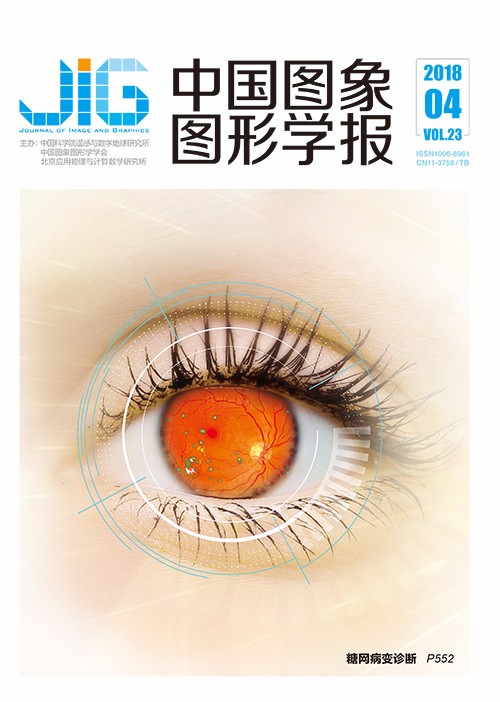
融合判别式深度特征学习的图像识别算法
摘 要
目的 卷积神经网络在图像识别算法中得到了广泛应用。针对传统卷积神经网络学习到的特征缺少更有效的鉴别能力而导致图像识别性能不佳等问题,提出一种融合线性判别式思想的损失函数LDloss(linear discriminant loss)并用于图像识别中的深度特征提取,以提高特征的鉴别能力,进而改善图像识别性能。方法 首先利用卷积神经网络搭建特征提取所需的深度网络,然后在考虑样本分类误差最小化的基础上,对于图像多分类问题,引入LDA(linear discriminant analysis)思想构建新的损失函数参与卷积神经网络的训练,来最小化类内特征距离和最大化类间特征距离,以提高特征的鉴别能力,从而进一步提高图像识别性能,分析表明,本文算法可以获得更有助于样本分类的特征。其中,学习过程中采用均值分批迭代更新的策略实现样本均值平稳更新。结果 该算法在MNIST数据集和CK+数据库上分别取得了99.53%和94.73%的平均识别率,与现有算法相比较有一定的提升。同时,与传统的损失函数Softmax loss和Hinge loss对比,采用LDloss的深度网络在MNIST数据集上分别提升了0.2%和0.3%,在CK+数据库上分别提升了9.21%和24.28%。结论 本文提出一种新的融合判别式深度特征学习算法,该算法能有效地提高深度网络的可鉴别能力,从而提高图像识别精度,并且在测试阶段,与Softmax loss相比也不需要额外的计算量。
关键词
Discriminative deep feature learning method by fusing linear discriminant analysis for image recognition
Huang Xu, Ling Zhigang, Li Xiuxin(College of Electrical and Information Engineering, Hunan University, Changsha 410082, China) Abstract
Objective Feature extraction plays an important role in image recognition, including face recognition and character recognition. However, feature extraction usually depends on domain knowledge or prior experiences. Convolutional neural networks (CNNs) are attracting the attention of researchers because they can automatically extract efficient features and simultaneously achieve image recognition via their self-learning capability. However, the learned features via classical CNNs may often have a poor discriminant capability for image recognition. This study introduces a linear discriminant analysis loss (LDloss) into CNNs and develops a discriminative deep feature learning method by fusing linear discriminant analysis (LDA) for image recognition. Therefore, CNNs can provide discriminant features to improve image recognition performance. Method A deep CNN for feature extraction is constructed to automatically extract efficient features for image classification tasks via a multilayer perceptron. LDA is introduced, and a new linear discriminant loss function (LDloss) is developed via a variant form of Fisher criterion. The new LDloss and softmax loss are integrated into a united loss function for deep feature learning. The learned features can minimize classification error and simultaneously achieve inter-class dispension and intra-class compactness. An average strategy based on mini-batch is used to update class centers in the learning process. Result Experimental results on MNIST and CK+ databases show that the proposed algorithm achieves 99.53% and 94.73% average recognition rates, respectively. Unlike softmax and hinge losses, LDloss achieves 0.2% and 0.3% increases on the MNIST database and 9.21% and 24.28% increases on the CK+ database under the same network structure, respectively. The proposed method can achieve 100% recognition rate for some classification in the MNIST and CK+ databases. Conclusion This study proposes a new discriminant deep feature learning algorithm for image recognition. The experimental results on different databases show that this proposed method can explicitly achieve intra-class compactness and inter-class separability among learned features and further efficiently improve the discriminative capability of the learned features. Therefore, the proposed method can achieve a higher accuracy recognition rate than some existing methods can. The proposed method also does not need additional computation load compared with softmax loss during the testing stage.
Keywords
convolutional neural networks deep feature learning LDA (linear discriminant analysis) loss function LDloss
|



 中国图象图形学报 │ 京ICP备05080539号-4 │ 本系统由
中国图象图形学报 │ 京ICP备05080539号-4 │ 本系统由